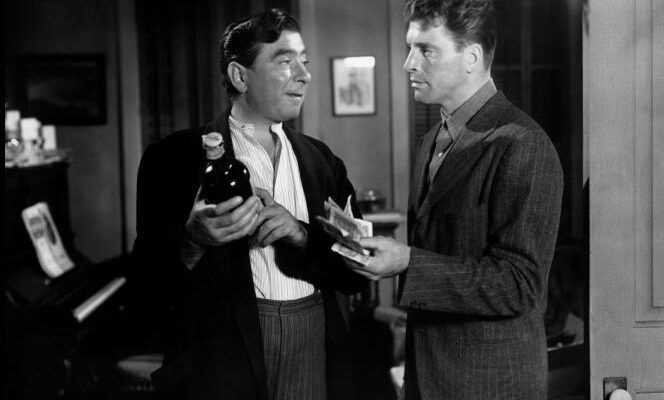It is a little pearl, almost unknown, of the film noir resuscitated on DVD and Blu-ray, the Rimini editions, by publishing The Hunted Lovers, by Norman Foster. Directed in 1948 by a rather anonymous director, the film is at the same time a challenge to censorship, a plunge into the psyche of the post-war period and a launching pad for a future star.
Written in 1940 by British novelist Gerald Butler but published in the United States only in 1946, Kiss the Blood off My Hands (literally “Wipe the blood off my hands with your kisses”) is a particularly dark and brutal novel, written in the first person. The narrator is a bully devoid of empathy, driven by uncontrolled violence. The book interests Burt Lancaster, who discovers the possibilities offered by a complex and tormented main character. He has just created his own production company with Harold Hecht, Harold Hecht-Norma Productions. Joan Fontaine completes the cast. The screenplay will be signed by Leonardo Bercovici from an adaptation of the novel by Ben Maddow and Walter Bernstein. And the film will be funded and distributed by Universal.
Following a fight that claimed the life of a bar owner, the author of the fatal punch, Bill Saunders (Burt Lancaster), takes refuge with a young woman, a nurse living alone. Far from denouncing him to the police, the latter becomes attached to him and hides him, then undertakes to integrate him into society by finding him work as a delivery driver for the clinic that employs him. It was immediately after the war and drugs, rare commodities, were trafficked in various ways. A thug (Robert Newton), witness to the accidental murder, blackmails Saunders by trying to hijack one of his cargoes, making the path to redemption through love particularly steep.
Masochistic dimension
Like a large number of films from this period falling under what has been called “film noir”, The Hunted Lovers testifies to the difficulties of reintegrating the traumatized veterans of the Second World War. The psyche of the American man is sick. The hero (or rather the anti-hero) of the film is the prey of irresistible attacks of violence which alienate his behavior and precipitate his destiny. But it is also possible to see in the description of this implacably marked fate a reminiscence of the poetic realism of pre-war French cinema.
It has been pointed out, and rightly indeed, the similarities between Norman Foster’s film and the Quay of the Mists, by Marcel Carné (1938). The masochistic dimension, often attached to the characters embodied by Burt Lancaster, is underlined here by an astonishing sequence in which Saunders undergoes corporal punishment (the action takes place in England where this kind of criminal practice was still in place until 1948). lashes. The film met with mixed success when it was released, but not only helped launch Burt Lancaster’s career but also defined his persona like a virile figure, eroticized and childish at the same time.
You have 5.69% of this article to read. The rest is for subscribers only.
